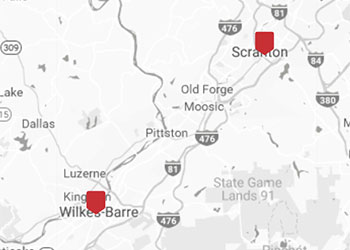Technology & Innovation
This report section addresses technology and innovation-related occupations and industries, funding for clinical trials, venture capital investments, and academic research. Each of these indicators measures some aspect of technological development or innovation. If demonstrated as regional strengths, they can point to economic resilience and opportunity, as well as improved quality of life.
However, innovation in regional businesses, healthcare, and educational institutions is difficult to measure directly. Several datasets presented here are limited, and many innovations in processes or practices occur without being counted. Nonetheless, it is incumbent upon regional leaders to continue to promote a culture of innovation and creativity. Through entrepreneurship and creative thinking, new ideas can be introduced, applied to real-world problems, and brought into the global marketplace. Major areas of technology and innovation include research and development, scientific research, medical and pharmaceutical research, and information technology.
Globally, economic activity is shifting toward knowledge-based jobs and industries like education, healthcare, and finance. Even traditional industries such as manufacturing and extraction are increasingly reliant on automation and other new technologies to stay competitive and, thereby, reliant on STEM workers. This report examines three STEM occupation categories: computer and mathematical occupations, life, physical, and social science occupations, and architecture and engineering occupations, all of which saw slight regional growth from 2023 to 2024.
Higher education institutions host a significant amount of research activity. Regionally, institutions reported over $5.1 million in spending on research, up from $4.9 million in the prior year. Together, these institutions employed four full-time staff, and 25 graduate assistants dedicated to research activities; employment decreased from the previous year.
Small Business Innovation Research (SBIR) is a competitive grant program run by the U.S. Small Business Administration to support research and development with potential commercialization. The Small Business Administration also coordinates the Small Business Technology Transfer (STTR) program, encouraging joint ventures between small businesses and nonprofit research institutions. Allocations for SBIR awards in Pennsylvania reached new highs in 2022 in both the number of awards and the total amount, though these figures have since declined. However, increases were evident in the STTR program compared to the prior year.
The region's multi-stage venture capital and angel fund investments also highlights how much innovation is occurring in Northeastern Pennsylvania. However, there is no single, systematic source for data on venture capital investment; therefore, it is difficult to measure. Only known investments were counted, so this number is likely an under-representation of actual venture capital funding that supports innovation and entrepreneurship in the area. Improving this metric will help diversify the regional economy, create jobs, and attract a younger demographic. The Ben Franklin Partnership has invested over $87 million in local companies over the past five years.
View Indicators Map

